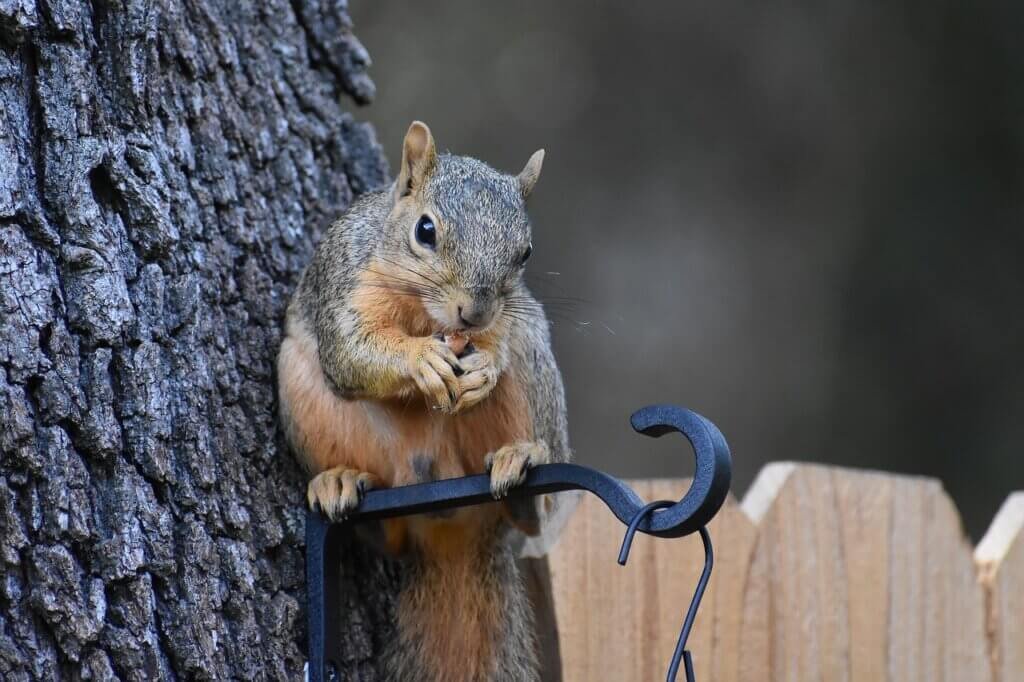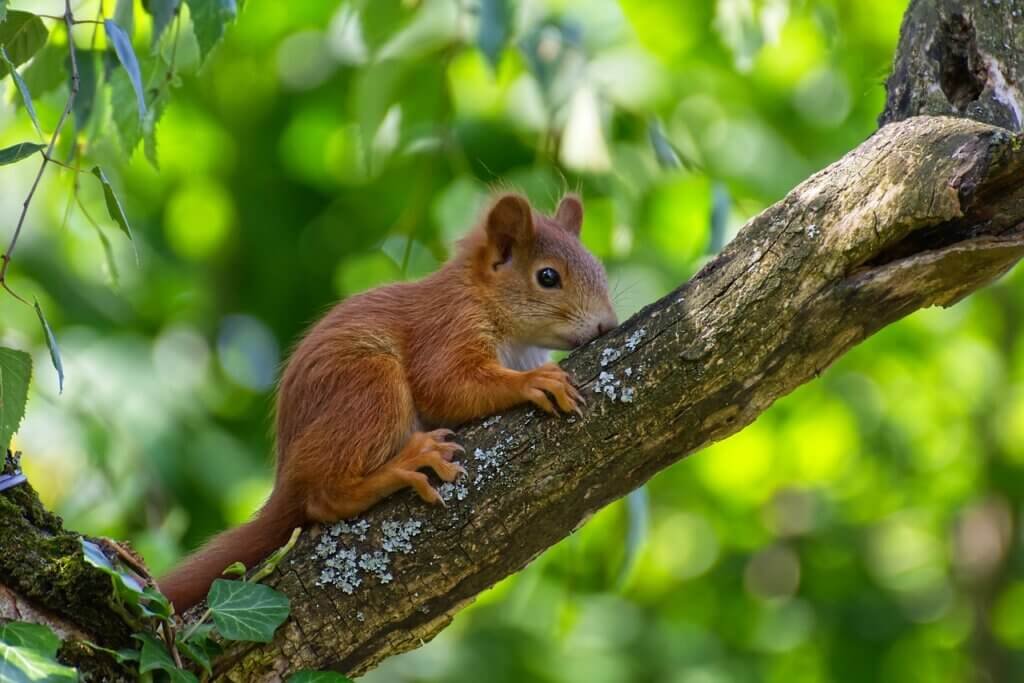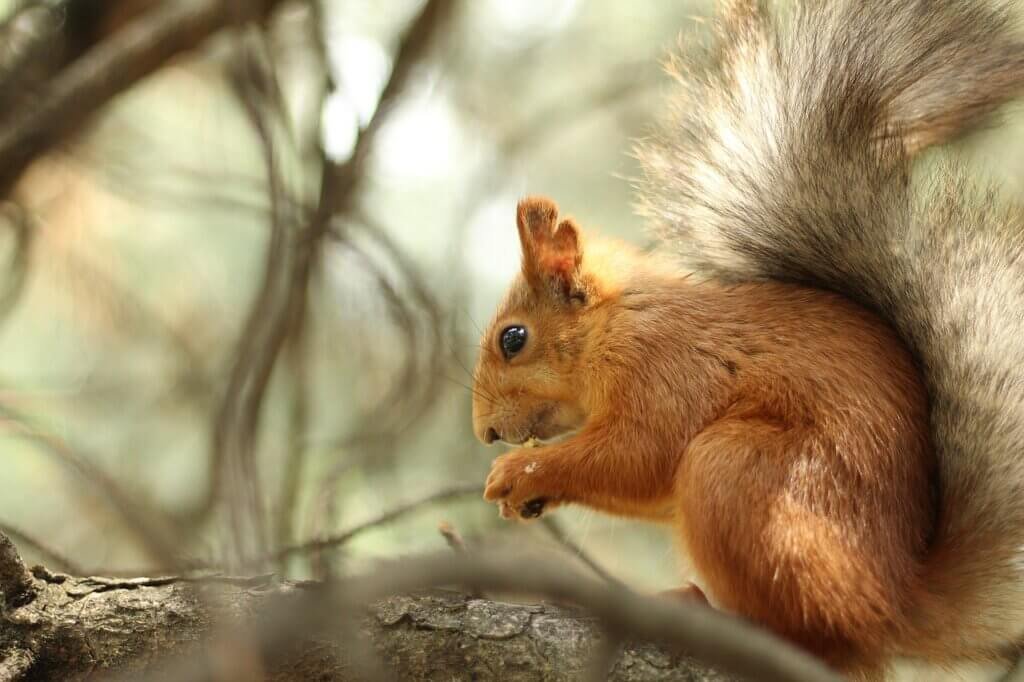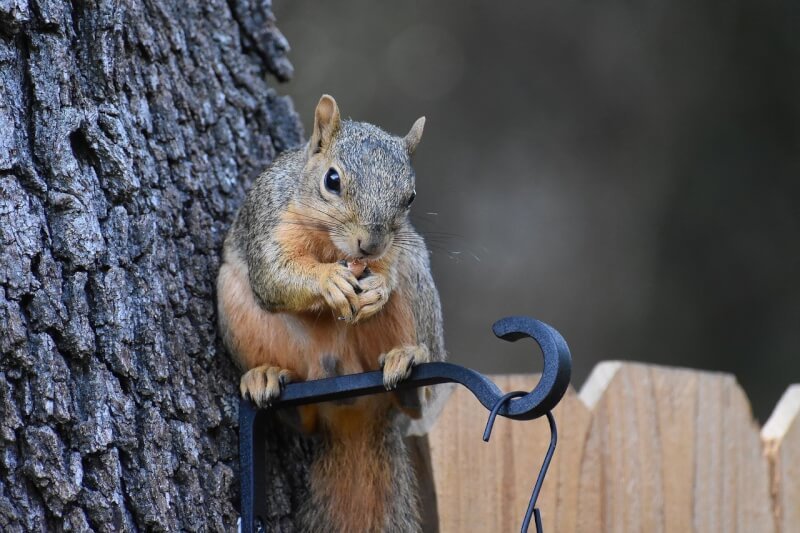Imagine strolling through the bustling streets of the city and suddenly stumbling upon a hidden treasure trove of delicious, wild edibles. It may seem like a dream, but urban foraging is a reality that can turn any concrete jungle into a veritable feast. From parks and sidewalks to abandoned lots and backyards, the city is teeming with edible plants just waiting to be discovered. In this article, we will explore the fascinating world of urban foraging, uncovering the abundance of nature’s pantry that lies right in the heart of the city. So put on your walking shoes and get ready to embark on a culinary adventure like no other – the urban jungle awaits!

The Basics of Urban Foraging
What is Urban Foraging?
Urban foraging refers to the practice of finding and harvesting wild edible plants and other food sources in urban areas. It involves exploring the city to discover and collect a variety of plants, mushrooms, berries, fruits, and nuts that are growing in parks, green spaces, community gardens, and even sidewalk gardens. It’s a way to connect with nature, promote sustainability, and gain a deeper appreciation for the abundance that can be found right in our own neighborhoods.
Benefits of Urban Foraging
Urban foraging offers numerous benefits, both for individuals and the wider community. First and foremost, it provides an opportunity to access fresh, organic, and locally sourced food for free. By foraging in urban areas, you can reduce your reliance on store-bought produce, which often travels long distances and may be treated with pesticides. Additionally, urban foraging encourages a deeper connection with the natural world and can serve as a form of exercise and relaxation. It also promotes sustainability by utilizing the resources already present in the environment and reducing food waste.
Safety Precautions for Urban Foraging
While urban foraging is a rewarding and enjoyable practice, it’s essential to take certain safety precautions. Firstly, make sure to obtain permission before foraging on private property, as well as adhere to any regulations or restrictions in your area. It’s crucial to properly identify edible plants and mushrooms and avoid toxic or poisonous species. Familiarize yourself with local environmental contaminants, such as pollutants or heavy metals, that may impact the safety of wild edibles. Lastly, be aware of the risk of misidentification and allergic reactions, and always start with small sample quantities when trying a new plant for the first time.
Identifying Edible Plants
Understanding Native vs Non-Native Plants
When it comes to identifying edible plants, it’s important to understand the distinction between native and non-native species in your area. Native plants are those that naturally occur in a particular region and have evolved in harmony with the local ecosystem. They often have established relationships with native wildlife and are better suited to the surrounding soil and climate conditions. Non-native plants, on the other hand, have been introduced to an area and may not have the same level of adaptability or ecological impact. While both native and non-native species can potentially be edible, prioritizing native plants in your foraging endeavors can help support biodiversity and the health of the natural environment.
Common Edible Plants in Urban Areas
Urban areas are surprisingly abundant with edible plants that can be foraged. Some common examples include dandelions, purslane, lambsquarters, chickweed, plantain, stinging nettles, and wild violets. These plants are often considered “weeds” but are packed with valuable nutrients and can be used in various culinary preparations. Additionally, certain fruit trees like apple, pear, and plum can also be found in urban environments, offering a delicious treat during the harvest season. By familiarizing yourself with the edible plants in your area, you can expand your foraging possibilities.
Resources for Plant Identification
Identifying edible plants can seem daunting, especially for beginners. However, there are numerous resources available to help you confidently recognize and differentiate between plants. Field guides specific to your region or city can be invaluable tools, providing detailed descriptions and photographs to aid in identification. Online databases and smartphone apps dedicated to plant identification can also be helpful, allowing you to search for specific characteristics or browse through photos. Lastly, consider joining local foraging groups or attending workshops where experienced foragers can share their knowledge and offer hands-on guidance.

Finding Foraging Spots
Exploring Parks and Green Spaces
When searching for prime foraging spots, parks and green spaces within your city are excellent places to start. These areas often feature diverse plant life, including both native and introduced species. Take leisurely walks or hikes through these spaces, paying close attention to the plants along the way. Look for areas with a variety of trees, shrubs, and open meadows, as they are more likely to support a range of edible plants. Remember to be respectful of the environment and only harvest within legal boundaries or with permission when needed.
Visiting Community Gardens
Community gardens are not only ideal for growing your own food but can also be excellent resources for urban foragers. These shared spaces bring together individuals with a passion for gardening and urban agriculture, resulting in a rich array of edible plants. Take the time to visit local community gardens, introduce yourself to the gardeners, and perhaps even offer to volunteer. By participating in the community, you can access valuable knowledge about what is being cultivated and potentially discover additional wild edibles growing in and around these green spaces.
Utilizing Sidewalk Gardens
Sidewalk gardens, though often overlooked, can hide pockets of edible plants waiting to be discovered. These gardens, typically located between the sidewalk and the street, are often planted with low-maintenance, drought-resistant vegetation. Keep an eye out for herbs like rosemary, thyme, and sage that may be planted in these areas. Some urban environments also feature edible landscaping, where fruit trees, berry bushes, or edible flowers are purposefully planted along sidewalks or in public spaces. Be respectful and only collect from these areas if they are intended for public use or consider seeking permission from the property owner.
Harvesting and Preparing Wild Edibles
Best Practices for Harvesting
When harvesting wild edibles, it’s important to adopt sustainable practices to ensure the continued growth and health of the plants. Harvest only what you need and leave a portion behind to allow for regrowth and to support wildlife. Be mindful of picking from rare or endangered species, as their populations are fragile and should be protected. It’s also crucial to harvest in a way that minimizes damage to the plant and its surrounding environment. Use sharp and clean tools, such as shears or scissors, to make clean cuts and avoid disturbing the root systems.
Cleaning and Storing Wild Edibles
After harvesting, it’s essential to thoroughly clean your wild edibles to remove any dirt, insects, or potential contamination. Gently rinse the plants or mushrooms under cool water and inspect them carefully. Remove any damaged or wilted parts. Pat them dry with a clean towel or allow them to air dry before storing. Depending on the type of edible, you may store them in the refrigerator, in a cool and dry place, or preserve them through drying, freezing, or canning methods. Proper storage will help maintain the freshness and flavor of the wild edibles until you are ready to use them.
Cooking and Incorporating Wild Edibles into Your Diet
Cooking with wild edibles offers a unique and exciting opportunity to experiment with new flavors and textures. Many wild plants can be used as versatile ingredients in various dishes, ranging from salads and soups to stir-fries and teas. Nettles, for example, can be blanched and used as a substitute for spinach, while dandelion leaves can be sautéed or added to smoothies. Edible mushrooms can be incorporated into sauces, stews or enjoyed as a standalone dish. Experiment with different recipes and cooking techniques to make the most of your foraged finds and enhance your culinary repertoire.

Foraging for Non-Plant Edibles
Identifying Edible Mushrooms
Mushroom foraging can be a fascinating and rewarding aspect of urban foraging. However, it is crucial to have a solid understanding of mushroom identification before venturing into this aspect of foraging. Some edible mushroom species common in urban areas include oyster mushrooms, chanterelles, and morel mushrooms. To ensure proper identification, invest in a reliable field guide or seek advice from experienced mushroom foragers. Never consume a mushroom that you are unsure of, as some species can be toxic or deadly.
Foraging for Berries and Fruits
Berries and fruits are delightful finds during urban foraging expeditions. Look for wild berry bushes, such as blackberries, raspberries, and blueberries, growing along fence lines, in parks, or on the outskirts of wooded areas. When it comes to fruit trees, keep an eye out for apple, pear, cherry, and plum trees in residential areas and public spaces. Remember to be respectful of private property and only harvest from trees that are intended for public use or with permission. Wash the berries and fruits thoroughly before consumption, and enjoy nature’s sweet treats.
Harvesting Nuts in Urban Areas
While it may require more effort and patience, urban areas can also yield a surprising abundance of nuts. Walnut, chestnut, and pecan trees often thrive in parks or along the streets of older neighborhoods. After the trees shed their nuts, simply collect them from the ground, being sure to only take those that are sound and undamaged. Shells can be cracked to reveal the delicious nutmeat inside, which can be enjoyed as a snack, used in baking, or incorporated into savory dishes. Nuts are a fantastic source of healthy fats and can add depth of flavor to your culinary creations.
Foraging Ethics and Sustainability
Respecting Private Property and Regulations
Respecting private property and adhering to regulations is of utmost importance when engaging in urban foraging. Always seek permission from property owners before foraging on private land and respect their wishes if they decline. Familiarize yourself with local rules or ordinances regarding foraging in public areas and abide by them. It is essential to strike a balance between enjoying the benefits of urban foraging and being responsible stewards of the environment.
Taking Only What You Need
One of the golden rules of foraging, regardless of the setting, is to take only what you need. Overharvesting can have detrimental effects on the plant populations, disrupt the local ecosystem, and limit the availability of food sources for wildlife. By minimizing your impact and sustainably gathering wild edibles, you ensure the continued growth and health of the plants and contribute to the overall balance of the urban environment. Remember that foraging is about appreciating and utilizing nature’s gifts, not depleting them.
Promoting Biodiversity and Conservation
Urban foraging can be an opportunity to promote biodiversity and contribute to conservation efforts. By recognizing the value of native plants and prioritizing their collection over non-native species, you help maintain the delicate balance of local ecosystems. When harvesting wild edibles, do your best to avoid rare, endangered, or vulnerable plants, allowing them to thrive and propagate. Additionally, consider participating in community initiatives and volunteering for conservation organizations to actively contribute to the preservation of urban biodiversity.

Foraging in Different Seasons
Spring Foraging
Spring is an exciting time for urban foragers as new growth begins to emerge. Look for young and tender greens like dandelion leaves, wild garlic, and chickweed. Nettles are also abundant during spring and can be harvested and enjoyed while wearing protective gloves to avoid stinging. As the season progresses, be on the lookout for ephemeral delights such as morel mushrooms and ramps. Spring foraging is a time of renewal and offers a fresh array of flavors to incorporate into your seasonal recipes.
Summer Foraging
Summer brings a wealth of edible treasures to urban foragers. Berries, such as raspberries, blackberries, and mulberries, start ripening and can be found along hedgerows and in parks. Fruit trees, such as apple and pear, may be laden with delicious produce. Fresh herbs like mint, basil, and lemon balm are also at their peak during this season. Stay hydrated and energized with refreshing drinks made from lemon verbena or elderflowers. Summer is a bountiful time to immerse yourself in the abundance of urban foraging.
Autumn Foraging
Autumn is often considered the peak season for urban foragers due to the abundance and diversity of wild edibles. Look for nuts that have fallen from trees like hazelnuts and chestnuts, which can be toasted and used in various recipes. Fungi, such as chanterelles and oyster mushrooms, thrive in the damp and cool autumn conditions. Foraging for wild apples, pears, and plums can also be fruitful during this season. Enjoy the crisp air and vibrant foliage while gathering the flavors of autumn to savor throughout the year.
Winter Foraging
Although winter may seem less fruitful for foraging, there are still opportunities to discover edible plants and resources. Some herbs, such as rosemary and thyme, are evergreen and can be harvested year-round. Winter is also an excellent time for mushroom foraging, as certain species, like the velvet shank and oyster mushrooms, thrive in colder temperatures. Additionally, keeping an eye out for tree bark and branches can provide materials for teas or infusions. Embrace the quiet beauty of winter and embark on a different kind of foraging adventure.
Foraging Safety and Risks
Avoiding Toxic Plants
When foraging, it is imperative to avoid toxic or poisonous plants to safeguard your health. Familiarize yourself with the poisonous plants that grow in your area and learn to recognize their distinguishing features. Be particularly cautious with plants that share similarities with edible counterparts, as misidentification can lead to serious consequences. If in doubt, always err on the side of caution and consult reliable resources or seek guidance from experienced foragers before consuming any wild plant.
Understanding Environmental Contaminants
Urban areas may be subject to various environmental contaminants that can impact the safety of wild edibles. Pollution from industry, vehicle exhaust, and nearby construction sites may introduce harmful substances into the environment. It is essential to assess the quality of the foraging site and consider potential contamination risks. Avoid foraging near busy roads, industrial sites, or areas with visible signs of pollution. When in doubt, consult local environmental agencies or organizations for information on contamination concerns in your area.
Risk of Misidentification and Allergic Reactions
Perhaps the most significant risk associated with foraging is the potential for misidentifying plants and mushrooms. Some edible species closely resemble toxic ones, making accurate identification crucial. Each foraging expedition should be approached with caution, especially when venturing into unfamiliar territory. It is essential to double-check the characteristics of the plants you intend to harvest and cross-reference them with reliable resources or experienced foragers. Additionally, individuals with known allergies or sensitivities should be cautious when trying new foods and consult a healthcare professional if needed.

Foraging Tools and Equipment
Essential Tools for Urban Foraging
While urban foraging requires minimal equipment, there are a few essential tools that can enhance your experience and ensure your safety. A sturdy pair of gloves, preferably made of puncture-resistant material, is essential for protecting your hands from thorns, stinging nettles, and potential contaminants. A small hand trowel or digging tool is useful for carefully extracting root vegetables or bulbs. Additionally, a sharp knife or scissors will come in handy for harvesting herbs, mushrooms, and other delicate plant parts. Carry a reusable bag or basket to collect your foraged treasures while allowing airflow to prevent spoilage.
Recommended Field Guides
Field guides are indispensable companions for any forager, providing detailed information about edible plants, mushrooms, and their distinguishing features. Look for field guides specific to your region or city, as they will include species that are most likely to be found in your local area. Some reputable field guides for urban foragers include “Foraging the Rocky Mountains” by Lizbeth Morgan, “Midwest Foraging” by Lisa M. Rose, and “Wild Urban Plants of the Northeast” by Peter Del Tredici. Invest in a reliable field guide that suits your location and learning style to enhance your foraging skills.
Foraging Kits and Gear
Foraging kits and gear can be convenient additions, especially for avid urban foragers. While not essential, they can make the foraging experience more organized and efficient. Consider carrying a small pair of pruning shears or scissors if you anticipate encountering thicker stems or branches. A magnifying glass or jeweler’s loupe can assist with identifying small and intricate plant features. Some foragers find it useful to have a reusable water bottle, a first aid kit, and a compass or GPS device for navigation purposes. Customize your foraging kit based on your needs, the environment, and the duration of your outings.
Foraging Communities and Resources
Joining Local Foraging Groups
Joining local foraging groups can be an excellent way to connect with like-minded individuals, learn from experienced foragers, and gain valuable insights into the local flora. Look for community organizations, meetup groups, or social media platforms dedicated to urban foraging in your area. Attending group forays, workshops, and organized events can provide opportunities to expand your knowledge, develop relationships, and support the collective efforts of urban foragers. By engaging with these communities, you can foster a sense of camaraderie and shared enthusiasm for sustainable living and local food systems.
Attending Workshops and Classes
If you are a beginner or want to further refine your foraging skills, attending workshops and classes can offer valuable hands-on learning experiences. Many nature centers, botanical gardens, and educational institutions offer courses on plant identification, mushroom foraging, and sustainable harvesting practices. These sessions are typically led by knowledgeable instructors who can guide you through the process of confidently identifying and safely harvesting wild edibles. Participating in workshops can also provide opportunities for networking with experts and fellow enthusiasts.
Online Foraging Resources
The internet has revolutionized access to information, making it a valuable resource for urban foragers. Online platforms and websites dedicated to foraging provide a wealth of information, including plant identification guides, recipes, foraging tips, and personal experiences shared by seasoned foragers. Websites like “Eat the Weeds” by Green Deane and “Forager’s Harvest” by Samuel Thayer offer comprehensive guides to wild edibles and provide a wealth of botanical knowledge. Online forums and social media groups focused on foraging also provide opportunities for discussion, asking questions, and sharing your own discoveries.
In conclusion, urban foraging offers a rewarding and sustainable way to connect with nature, access fresh food sources, and promote biodiversity in our cities. By familiarizing yourself with native plants, recognizing safe foraging spots, and adopting sustainable practices, you can embark on exciting foraging adventures right in your own neighborhood. Remember to always prioritize safety, respect private property and regulations, and be mindful of the environment as you enjoy the abundance that urban foraging has to offer.


